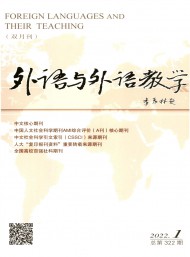外语教案范文10篇-欧洲杯买球平台
时间:2023-03-22 08:04:22

外语教案范文篇1
教学目标
*复习地名
*掌握表示天气情况的词语
*能够谈论天气,表达自己的情感
教学向导
目标语言
语言结构
语言功能
howistheweather?
it’sraining/windy/cloudy/sunny/snowing/cold/hot.
现在进行时
whatareyoudoing?i’mwatchingtv.
whatishe/shedoing?
he/sheisplayingbasketball.
whataretheydoing?
they’restudying.
谈论天气
重点词汇
学习策略与技巧
跨学科知识
windycloudyrainsnowsunnycoldcoolwarmhumidwinterweather
pairwork
groupwork
其他国家、城市名称
地理方位
教学过程设计:
steps
teacher’sactivity
students’activity
preparation
brainstorm
showsomepicturesandguesstheplaces
lookatthepicturesandgivetheanswers
picturesorppt.
taskipairwork:talkabouttheplacesandtheweather
aim
familiarwiththenewwords
1
lookatthepicturesandknowthenameoftheplaces
read
ppt.
2
readthenewwordsin1aandexplainthemeaning
readandremember
3
usethesentence‘howistheweatherinbeijing?’
answerthequestionsandlearn
4
makeasample:questionandanswer;letssdoit
preparetheirconversations
5
movearoundtheroomandgivesupportasneeded
talktoeachother
6
asksomepairstoshowtheirconversations
givetheirworksormoreexpressions
moresentencestructures
taskii:listeningcomprehensions:whataretheydoing?
aim
familiarwiththenewstructure
1
lookatthepicturesin2aandknowtheiractivities
look
2
listentothetapefortwotimesandfillintheblanks
listenandgivetheanswers
tape
3
movearoundtheroomandgivesomesupport
writetheanswers
4
checktheanswerandpointoutthefocus
check
5
pairworkstopractice:what’shedoing?andanswerit
makethepairwork
taskiii:groupwork:isheplayingsoccer?
aim
familiarwiththesentences
1
guess:whatishedoing?
ishe…..?
how’stheweather?
listentotherulesofthisgame
2
givesometimeandletthempreparetoact
talkabouthowtoact
3
movearoundtheroomandgivesupport
talkingroups
4
askonetoact,othergroupguess,thewinnergroupgets1point;
actandguess
5
evaluatethebestgroupintheclass
choosethebestgroupandthebestactor
homework
callyourfriendandaskhim/herwhathisfamilymembersaredoing,writeadiary.
教学反思:本单元主要谈论天气,可以结合地理方位,国家名称来扩大学生的知识范围。在活动的选取方面,注重结合目标语言的机械操练及任务型的情景练习,使学生多方位的理解现在进行时的用法。让学生使用所学过的句型,可以巩固以前的知识。老师在任务中的指导地位是很重要的,要仔细设计好任务的各个环节,还要更加充分的备课、准备资料。
外语教案范文篇2
1.能够简单叙述小水滴的“旅行经历”并通过阅读进一步熟悉水循环的过程。
2.能够认读c部分pronunciation的音标:/э:/,/э/,/ts/,/dz/,/tr/,/dr/并能朗读例词,完成readandmatch的练习。
3.能跟着录音说let’schant部分的内容,能力强的学生能自己说。
4.培养学生热爱大自然的美好情感,增强环保和节约用水的意识。
课题unit6thestoryofrain
教学重点
1.阅读let’sread部分,进一步理解水循环的过程。
2.了解字母组合的发音,认读音标/э:/,/э/,/ts/,/dz/,/tr/,/dr/。
3.说唱let’schant部分的歌谣。
教学难点
1.let’sread部分是让学生通过阅读进一步理解水循环的过程,内容比较复杂也比较抽象,而且容量大,难点多,如:cooler,higher等。
2.音标/э:/,/э/,/ts/,/dz/,/tr/,/dr/的认读和字母组合的发音比较难以掌握,教师要让学生通过感悟发音和体会发音的方法反复练习。
教具准备
1.教师准备小水滴和风先生等各种头饰。
2.教师准备本单元a部分的单词卡片。
3.教师准备alet’sread部分的挂图和录音。
4.学生课前做好小水滴和风先生等的头饰。
5.教师准备音标卡片。
教学过程
1、warmup(热身)
活动一:口语练习
教学参考时间:1-2分钟
1.给学生时间,展示自己的口语水平。内容可以是自我介绍也可以是对话表演或图片讲解。例:iamaboy/girl.i’minbeijingprimaryschool.icomefrombeijing,china.ilikegreen.thegrassisgreen.thetreesaregreen.theleavesaregreen.ilikethese.ilikegreen.
2.其他学生根据刚才口语展示同学所说内容进行问答练习。如:
whatcolourdoesshe/helike?
wheredoeshe/shecomefrom?
howoldishe/she?
2、review(复习)
活动二:快看快说
教学参考时间:2-3分钟
1.教师依次出示let’sstart和alet’slearn部分的单词卡片sun,river,sea,snow,streamcloud,vapour,rain学生齐读后张贴在黑板上。
2.教师迅速拿走一张卡片,如:sun,让学生说说被拿走卡片的内容并拼读单词。
3.用同样的方法完成其它单词的拼读。
活动三:对话表演
教学参考时间:1-2分钟
教师请几组学生表演alet’stalk部分的对话。
3、presentation(呈现新知)
活动四:学故事
教学参考时间:7-8分钟
1.教师拿出准备好的头饰,戴上小水滴的头饰,说:hello,iamlittlewaterdrop.nicetomeetyou.教师与学生打招呼,引导学生用:hello,littlewaterdrop.应答。然后教师请一名学生上台,让她/他闭上眼睛,给她/他戴上风先生的头饰,让他睁开眼睛,教师对他/她说:hello,mrwind.然后,请该学生走到同学中间,让其他学生用hello.mr.wind.同他/她打招呼。
2.教师表现出很热的动作,说:littlewaterdropisveryhot.然后教师展开本部分的挂图,分别指着小水滴和风先生问:whoishe?引导学生回答。教师说:littlewaterdroptakesatrip.wheredoeshego?howishistrip?doeshehavealotoffun?let’slisten.
3.教师播放alet’sread部分的录音,让学生认真听。
4.逐段听录音,带领学生理解大意。可以让学生听后翻译大义,重点词语教师要提示学生中文意思。如:cooler,higher。
5.教师播放alet’sread部分的录音,每播放一句,教师按一下暂停,学生逐句跟读。
6.让学生打开书,翻到72页,让学生自己阅读对话。
7.教师播放alet’sread部分的录音,学生跟着录音练习讲故事。
活动五:看谁说得多
教学参考时间:3-4分钟
教师出示alet’sread部分的挂图,指一幅插图请学生描述,要求每名学生重复前面学生说过的句子,同时再说一句话。如果前面的学生说:it’sasunnyday.后面的学生就要说:it’sasunnyday.littlewaterdropsleepsinariver.第三个学生要重复前两个学生的句子,再说一句新的。以此类推,说得越多越好。
活动六:语音知识
教学参考时间:4-5分钟
1.教师出示含有字母o和字母组合or,tr,dr,ts,ds的单词:hot,clock,orange,port,fork,tree,try,train,driver,drop,dry,ants,pants,hands,cards,让学生读一读这些单词。
2.教师读这些单词,让学生回忆字母组合在单词中的发音。
3.教师出示shorts,drop,boards,draw,tropic等单词,让学生试着朗读。
4.教师引导学生总结发音规律,出示音标卡,带领学生朗读/э:/,/э/,/ts/,/dz/,/tr/,/dr/。
5.教师播放本部分的录音,学生跟读。
4、let’splay(趣味操练)
活动七:歌谣说唱
教学参考时间:2-3分钟
1.教师播放let’schant部分的录音,问问学生听到哪些自然界的词语saysomewordsofnatureinthechant。
2.教师再次播放let’schant部分的录音,学生跟着说。
3.教师用手势表示事物顺序的词语first,then,next并带读。
4.教师播放let’schant部分的录音,学生再说一遍。
5.教师出示“大海,太阳,云朵,雨水”的图片,学生自己说说歌谣。
活动八:兔子耳朵
教学参考时间:1-2分钟
教师匀速朗读一段课文,教师故意漏读其中的一个单词,让学生找出漏掉的词并说出完整的句子。比如教师说:oh,no!ifalling.学生应该说:oh,no!iamfalling.
活动九:故事大王
教学参考时间:5-6分钟
1.教师将学生分为三至五人一组,让学生挑选课文中的一段故事进行再加工。教师指导学生展开想象,可以增加新人物,比如小蚂蚁、小兔子等。
2.教师让学生上台表演故事,每小组表演之后,教师带领学生作简单点评并打分。
3.综合学生的表演,评选出最佳表演奖和最佳改编奖。
5、consolidationandextension(扩展活动)
活动十:练一练
教学参考时间:3-4分钟
做本单元alet’sread部分的活动手册配套练习。
1.教师让学生自读readandsay.部分的阅读短文,理解大意。
2.教师带领学生理解短文,回答问题。howcanyougetvapour?discusswithyourpartner.
3.教师带领学生做活动手册本单元的附加题部分:pronunciation,readandmatch.读单词,并把单词和音标连线。
活动十一:小结
教学参考时间:1分钟
1.认读音标:/э:/,/э/,/ts/,/dz/,/tr/,/dr/。
外语教案范文篇3
i.teachingmaterial
atelephonecalla:mayispeaktojim,please?
b:sorry.he''''snotathome.
a:whereishenow?
b:hewenttothebookshop.
a:wouldyoupleasetakeamessage?
b:sure.
a:tomorrowisteachers''''day.we''''llhave
apartyatschool.
b:whattimeistheparty?
a:atthreethirtyintheafternoon.
b:ok,i''''lltellhimwhenhe''''sback.
a:thankyou.
ii.teachingaims
1)enablethestudentstomaketelephonecallsinenglishandgetthemtoknowhowtobehavethemselvesonthetelephone.
2)raisethestudents''''interesttolearnenglish.
3)encouragethestudentstohavegoodcooperationwithoneanother.
iii.teachingcontents
1)patterns:
mayispeakto...?
wouldyoupleasetakeamessage?
2)vocabulary:message,party,takeamessage
iv.teachingaids
fourtoytelephones,acd-rom,atoysantaclaus.
v.teachingprocedures
step1.warming-upexercise
singthesong"greetings".
step2.presentationandpractice
1)askthestudentstolookatthescreenandlistentothetalkbetweentheteacherandthepersoninthescreen.
2)afterthetalk,theteachertellsthestudentshowtomakeatelephonecallinenglish.writethepattern"mayispeakto...?"ontheblackboardandteachthemhowtouseitonthephone.
3)usingthefourtoytelephones,askthestudentstomaketelephonecallsinpairswiththefollowingpatterns:
----mayispeakto...?
----speaking.
thosestudentswhodonothavetoytelephonescanusetheirpencil-boxesinstead,ortheycanputtheirfingerstotheirearsasasigntomakephonecalls.
4)askonestudenthis/hernameandhis/herhometelephonenumber,usingthefollowingsentences:
wouldyouplease''''tellmeyourname?
wouldyoupleasetellmeyourhometelephonenumber?
5)makeatelephonecalltoastudentandgetthestudentstolearnthefollowingshortdialogue:
t:hello.isthat8614761?
s:yes.
t:mayispeaktoxiaolong?
s:sorry,heisnotintheoffice.
t:wouldyoupleasetakeamessageandaskhimtocometoschoolthisafternoon?
s:sure.
t:thankyou.
6)askthestudentstomakecallsingroups.
thenasksomepairstoactouttoseeiftheyknowhowtousethepatternsbelow:
mayispeakto..,?
wouldyoupleasetakeamessage?
7)askthestudentstolookatthescreenandlistentothedialogue"atelephonecall"with
thefollowingquestionsinmind:
whatisthemessageabout?
whattimeistheparty?
thenaskthestudentssomequestionsiftheyhaveunderstoodthedialogue.
8)askthestudentstolookatthedialogueonthescreenandlistentoitagain.
9)theteachertellsthestudentsthemeaningoftheword"tomorrow"withthehelpofa
calendarandthefollowingsentences:
we''''llhaveapartyatschool.
i''''lltellhimwhenhe''''sback.
10)askthestudentstoreadthenewwordandthesentencesontheblackboard.
11)askthestudentstoretellthedialogueintheirownwordsinpairs.
12)playthegame"throwingsantaclaus"toseeifthestudentscansaythesentenceswell.
theteacherthrowsthetoysantaclaustoastudent.whenthestudentcatchesthesanta
claus,heorshemustsayoneofthesentencesontheblackboard,andthenthrowsthesanta
claustoanotherstudent.
13)askthestudentstoactoutthedialogue
inroles.
step3.
1)showthestudentsthreepicturesonthescreen.askthemtomaketelephonecallsingroups
basedonthepicturetheyhavechosen.
pictureone:youwanttoinvitetomtoplayfootbauwithyou,buttomhasn''''tgotatelephoneat
home.youaskrosetotakeamessagetotom.
picturetwo:misswuisill.youwanttopayavisittoherwithjack.butjackisnotatme.hissisterpicksupthephone.
picturethree:youwillholdabirthdaypartyonsunday.youphonetolilytoinvitehertoyourparty,butsheisn''''tathome.howdoyouspeaktohermother,whoisathomeatthattime?
2)asksomepairstoactouttheirtelephonecalls.
3)askthestudentstomakephonecallstotheteacherswhoaresittingaroundthedassroom.
theteachertellsthestudents:"therewillbeapartyonnewyear''''sday.wewillinvitesometeacherstocometoourparty.writethenamesandthetelephonenumbersofsometeachersand
maketelephonecallstothem".
step4.summary
tellthestudentsthewayofmakingaphonecallintheirdailylife.
step5.homework
askthestudentstomakephonecallstotheirfriendsandtellthemtheirschoollifeafter
class.
外语教案范文篇4
lesson103教学设计示例
period:thethirdperiod
properties:overheadprojector,somepictures
teachingobjectives:studentsshouldknowdifferenttypesofsentencesandgraspsomewords.
teachingaims:
1.knowledgeaims
(1)differenttypesofsentences
①simplesentences
②compoundsentence:itconsistsoftwomoresimplesentences.
③complexsentence:itconsistsofaprincipalclauseandoneormoresubordinateclauses.
(2)usefulexpressions
bytheway,few,afew,little,alittle,either,neither
(3)continuetolearnthepassageabouttitanic.
2.abilityaim
studentscansaysomethingabouttitanic.
teachingprocedures:
a)organizingtheclass
greetingsandadutyreport.
b)revision
dictatesomewords:trip,pleasant,iceberg,hole,sink,lifeboat,shout,married,thankful,join
c)leading-in
t:yesterdaywetalkedaboutthefilmtitanic.manyofusagreedthatitwasaverygoodfilm.whatotherfilmsdoyoulike?
studentsareencouragedtogivetheiranswers.
d)practise
studentsreadthedialoguealoudinpairs,thentheymakeuptheirowndialogues.theymaylookupnewwordsinthedictionary.
e)learn
studentsreadthegrammarnoteonpage157bythemselvesandseewhattypesofsentencestheseare:
1.therewasaverybigholeintheshipandwaterbegantocomeinside.
2.oneafternooninapril1912,anewshipsetofffromenglandtoamericaonitsfirsttrip.
3.it’shardtosaybecauseilikemanyfilms.
4.doyouknowhowmanypeoplelosttheirlives?
teachercheckstheanswerswiththewholeclass.then,teachergivesthesentencetype,studentsgiveexamplesentences.
f)homework
外语教案范文篇5
句型:whatarethe…sdoing?theyare…
教学难点:
单词climbing,swinging,和drinking的读音。
四会掌握五个动词(短语)的ing形式。
课前准备:
教学过程中所需的图片(let’sstart,let’slearn)、录音(let’slearn,let’ssing)。
2、a部分的五张单词卡片和本课时的五张单词(短语)卡片。
教学流程图:
教学过程:
warmup(热身)
活动一:复习单词
教学参考时间:3分钟
(1)教师出示let’slearn/a中的五张单词卡片,让学生认读单词并做出相应的动作。
(2)听写这五个单词。
活动二:唱一唱
教学参考时间:2分钟
(1)教师播放let’ssing部分的歌曲,学生听录音进行表演唱。
(2)教师出示单词卡climbing和swinging,让学生认读单词并用动作表示其含义。
2、presentation(新课呈现)
活动三:学一学
教学参考时间:10分钟
(1)教师出示let’sstart/a部分的图片(建议把let’slearn/b部分的图片融合到此图中。)让学生回答:whatisthemonkeydoing?
(2)教师指着考拉问:whatisthekoaladoing?学生答出sleeping后,教师出示单词卡,教读单词。
(3)教师指着let’slearn部分两只考拉的图问:whatarethekoalasdoing?引导学生说出:they’resleeping.
(4)教师出示两只熊猫和两只猴子的图问:whatarethepandas/monkeysdoing?
(5)教师出示两只狮子打架的图片,鼓励学生通过提问whatarethelionsdoing?来学习新单词fighting。
(6)教师让学生看图(let’sstart)做对话:whatarethebirds/kangaroos/elephantsdoing?当学生说出drinkingwater时,教师出示单词卡让学生认读。
活动四:读一读
教学参考时间:3分钟
(1)让学生看书听录音并跟读单词和句子。
(2)教师出示单词卡,让学生认读并拼读单词。
活动五:讲故事
教学参考时间:6分钟
(1)教师让学生看storytime部分的图片,让学生回答问题:wherearezipandzoom?whatdoeszipsee?whataretheydoing?引导学生作答。
(2)让学生听录音跟读故事。
(3)让学生分角色朗读故事。
3、let’splay(趣味操练)
活动六:心有灵犀
教学参考时间:5分钟
(1)一名学生上台。教师向其中的一名学生出示一张纸条,纸条上是一个有关动物的现在进行时的句子。
(2)该学生根据纸条的内容表演动作,其他学生猜:the…is/are。
(3)这个游戏可以采取男女生对抗赛的形式,看哪一队在规定时间内猜出的句子最多。
活动七:猜一猜
教学参考时间:5分钟
(1)教师将五张词卡放在讲台上。
(2)请一名学生上来随意抽取一张卡片,教师带领其他学生问:whatarethey?,持卡片的学生根据卡片上动物名称回答:theyare…。
(3)然后教师再问:whatthe…sdoing?,引导台下学生用theyare…猜。
4、consolidationandextension(巩固与扩展)
活动八:练一练
教学参考时间:5分钟
(1)活动手册listen,writeandsay.让学生先听录音在相应的空格里填上表示动作的词。当表格完成后,让学生做问答练习。
(2)活动手册let’sfindout.让学生仔细看图回答问题。
活动九:小结
外语教案范文篇6
第一课时
一、教学重点:
动词短语及其ing形式:drawingpictures,doingthedishes,cookingdinner,readingabook,answeringthephone。
句型“whatareyoudoing?”及其回答“i’mdoingthedishes/….”。
二、教学难点:
动词短语ing形式的读音,教师要多做示范,逐步引导学生流畅地连读。
三、课前准备:
教师准备各种动词短语卡片、图片。
教师准备本课时let’schant,let’slearn,let’ssing的录音带。
教师准备锅、铲、电话、碗碟等小道具。
教师准备本课时所需课件。
四、教学过程:
1、warmup(热身)
活动一:口语练习
教学参考时间:2—3分钟
教师就学生所学过的内容或当时情景进行日常交际,目的在于运用语言。可以是学生自我介绍,也可以是学生间对话练习。
如:myname’s….i’m10/11yearsold.ilikepinkandblue.iliketoeatfishandhamburgers.icanswimandicanspeakenglish.
2、review(复习)
活动二:师生交流
教学参考时间:2—3分钟
师生就所学知识进行交流,主要使用表示能力的句型,目的在于复习动词短语。
教师拿出动词短语的图片,说:lookatthesepictures.。随后,拿出其中一张图片与学生交流,如:icandraw.并做画画的动作。最后问:canyoudraw?引导学生说:yes,ican.或me,too.
在此基础上,初步渗透动词短语。教师继续说:icandraw.icandrawafish.引导学生说icandrawabook/akite/….最后,教师引出wecandrawpictures.强调并带读drawpictures。
教师继续鼓励学生表述能力的句子,鼓励学生说出所学的动词及动词短语。问:whatcanyoudo?学生回答:icandanceandcook.等。
3、presentation(呈现新知)
活动三:词汇学习
教学参考时间:5—6分钟
教师指着动词卡片说:icandrawafish.now,iamdrawingafish.边说边在黑板上画鱼,并强调iamdrawingafishnow.用彩色粉笔强调ing。鼓励学生做画画的动作,边做边说iamdrawingafish/acat/anapple/….
教师播放课件。
内容为本课时动词图片和短语拼写,每次出一幅图和其相配的短语的英文拼写及短语的发音。具体顺序如下:
doingthedishes,drawingpictures,cookingdinner,readingabook,answeringthephone
教师出示洗碗的动作卡片,学生听发音后,教师说:iamdoingthedishes.此时可作为扩展知识,告诉学生洗碗有两种表达方法,即iamdoingthedishes.或iamwashingdishes.
继续播放课件。用相同的方法让学生理解、认读:drawingpictures,cookingdinner,readingabook,answeringthephone。教师注意学生动词ing形式的读音,必要时多练习几遍,并纠正学生的发音。
教师回放课件内容,学生再次跟读。同时教师询问:whatareyoudoing?鼓励学生说完整句,如:iamdoingthedishes.iamreadingabook.iamcookingdinner.…此环节中,教师板书句型whatareyoudoing?iamdoingthedishes.iamreadingabook.iamcookingdinner.…
教师播放let’slearn部分的录音,学生边听边指边读,力争做到“眼到、手到、口到、心到”。
活动四:快速反应
教学参考时间:3—4分钟
教师带领学生做快速反应的游戏。教师说本部分的动词短语,如:dothedishes,让学生说出它的ing形式:doingthedishes。
教师把本部分的五张动作的卡片面朝上贴在黑板、窗户、门、墙等地方,然后说一张卡片上的短语,如:answeringthephone,学生迅速地指向该图片,指得又快又准确的学生为胜者。教师还可以用卡片的字母一面进行游戏。
两个游戏中,教师注意适时纠正学生的发音,巩固动词短语的同时纠正发音。
活动五:接力问答
教学参考时间:2—3分钟
教师出示本部分的动词短语卡片的ing形式,教师提问“whatareyoudoing?”一个学生a看教师的卡片、做动作并回答“iam….”随后让这个学生a接着问另一个伙伴b“whatareyoudoing?”,b根据教师手中的卡片来回答问题,回答问题后b接着问c,依次快速看卡片,做动作,回答提问。(a,b,c代表学生)
4、let’splay(趣味操练)
活动六:说说唱唱
教学参考时间:3—4分钟
教师播放let’schant部分的录音,学生认真倾听。
再次播放,鼓励学生跟读。
学生看书自己认读。
分小组练习说唱。
展示说唱歌谣情况。
活动七:生活再现
教学参考时间:4—5分钟
教师给学生提供调色盘,电话,碗碟等小道具,教师问:whatareyoudoing?引导学生边做动作边回答:iamdrawingpictures/doingthedishes/cookingdinner/answeringthephone/readingabook.
5、consolidationandextension(扩展活动)
活动八:传盒子
教学参考时间:2—3分钟
做“听音乐传盒子”的游戏,教师把drawingpictures,doingthedishes,cookingdinner,answeringthephone,readingabook等词条折叠后放进一个盒子里。音乐开始,学生按顺序传递盒子。音乐一停,拿到盒子的学生在盒子中抽取一张词条,教师引导其他学生提问:whatareyoudoing?抽到词条的学生根据词条上的短语边做动作边回答:iam….教师播放的音乐可以是本课时歌曲whatareyoudoing?也可以是其它歌曲。
活动九:练一练
教学参考时间:4—5分钟
做本单元alet’slearn部分的活动手册p33配套练习。
教师指导学生理解题目要求,指导操作方法.。listenandmatch是按所听内容连线,listenandwrite是按录音内容填写空缺单词。
教师播放活动手册第33页的录音,学生完成listenandmatch部分的练习。
再次播放活动手册第33页的录音,学生完成listenandwrite部分的练习。此环节,教师注意辅导学生规范书写。
五、板书设计
unit4whatareyoudoing?
whatareyoudoing?iamdoingthedishes.
iamcookingdinner.
外语教案范文篇7
ⅰ.四会单词和词组:
pain,in(the)future,berichin,contain,fat(n.),softdrink,score,scoresof,discuss,discussion,attheend(of)
三会单词和词组:examine,ripe,advise,patient,energy,weight,putonweight,westerner,cause,unhealthy,loseweight,suggestion
ⅱ.交际英语:
人人都希望自己身体健康,工作顺利,生活愉快。人体就像一部机器,机器需要经常保养才能不停地正常运转,不出故障;人也需要营养合理的饮食、充足的睡眠、必不可少的休息与娱乐。倘若你为了省钱省时间而终日凑合着吃东西;倘若你为了挤出更多的时间对付艰苦的学习而挤掉了睡眠时间;倘若你为了多打工赚钱,几乎舍弃了所有的休息与娱乐;那么,生病就在所难免。万一人生了病就需要去医院诊断出故障的原因,这时就需要和医生打交道,下面是常用到的语句。
医生用语:
1.whatcanidoforyou?/whatwasthematter?/whatsthetrouble?
2.doesithurthere?/itsnothingserious./letmeexamineyou./takethismedicinethreetimesaday./andiadviseyounottodo…
3.drinkplentyofwaterandhaveagoodrest./youdbetterhaveagoodrest./youllbewellsoon.
4.showmeyourtongue./stickoutyourtongue./didyoucoughmuch?/fortunately,youonlyhavetheflu(流感)./youllhavetobehospitalized(住院).
5.howlonghaveyoubeenlikethis?/well,letssee.openyourmouthandsay"ah"./keepwarmanddontcatchcold.
病人用语:
1.ivegotapain(cough,headache,toothache)./idontfeelwell./theressomethingwrongwith…./thisplacehurts./ifeelagreatpainhere./ifeeldizzy(头晕)./itooksomemedicinelastnight,buttheydidnthelp./doctor,pleasegivemeanexamination.
2.ivehadmytemperaturetaken.iindeedhaveafever./iwashotandcoldbyturns.
3.idontfeelwell,doctor./ihopeitwontlastlong./idontfeellikeeatinganything.
4.ihaveasorethroat(喉咙痛)andmychesthurts./itstartedbotheringmeyesterdayafternoon./ifeelhotandfeverish./imachingallover.
5.ivebeenlosingsleep./mywholebodyfeelsweak./ivelostmyvoice./myearsareringing,andmycheeksburning./ifeelapaininmyleftleg.
ⅲ.语法重点:进一步学习提出建议和忠告的句型。
1.iadviseyou(not)todo…/youdbetter(not)do…/isuggestthatyou(should)do…/whynotdo…/whydontyoudo…
2.itsbettertobeabsolutelysure,evenifitdoestakeabitmoretimeandtrouble.
3.well,ifiwereyou,iwouldspendaboutfourdayssightseeinginbeijingandtwoorthreedaysinshanghaiforshopping.
4.letmegiveyouabitofadvice,ifyoudontmind.stopsmokingoratleastcutdownonit.watchyourdietand…
5.how/whataboutdoingsomeshoppinghere?
6.ithinkwedbettersendforadoctor.
7.well,ifyougoonthewayyouhave,youreonlygoingtomakethingsharderforyourself.
8.yes,isupposeso./yes,icertainlywill./thatsagoodidea./yes,butdontyouthink…?
(二)单元重点词汇点拨
1.contain作及物动词是"包含;包括;能容纳,能装入"
seawatercontainssalt.
thisauditoriumwillcontain3,000people.
点拨
(1)contain和include虽然都有"包含"的意思,但contain可用于表示包含所含之物的全部或部分,而include则只是包含一部分。试对比:
theparcelcontainedadictionary.那包裹里装的是一本字典。
theparcelincludedadictionary.那包裹里也包括了一本字典。
thetourincludesavisittoparis.这次旅行包括游览巴黎。
thebasketcontainsavarietyoffruits.这篮子装有各种水果。
(2)including可以作介词连接介词短语。试比较:
manywomenwerewaitingtobuythatkindofcloth,includingmymother.
manywomenwerewaitingtobuythatkindofcloth,mymotherincluded.
可以这样说,include着重"被包含者只是整体中的一部分"。contain着重"内有"。
2.advise作及物动词是"忠告、劝告、建议"
thedoctoradvisedasoftdiet.医生建议进软食。点拨
(1)advise doing
headvisedgettingplentyofsleepandeatinggoodmeals.
(2)advisesbtodo建议某人干……。advisesbnottodosth=advisesbagainstdoing建议某人不要干
theteacheradvisedusnottoreadcarelessly.=theteacheradvisedusagainstcarelessreading.
对比:theteacheradvisedourreadingcarefully.(动名词复合结构)
(3)advisethat 主语 (should)do
sheadvisedthathespendhisholidaysinheinan.
对比:(误)sharonsugg
estedmetoaskdryangforhelp.
(对)sharonadvisedmetoaskdryangforhelp.
(对)sharonsuggested/advisedthatishouldaskdryangforhelp.
(对)sharonsuggested/advisedmyaskingdryangforhelp.
(对)iwasadvisedtoaskdryangforhelpbysharon.
(4)advice是不可数名词,表达"一条建议"用:apiece/bit/wordofadvice。
3.score(比赛的)得分;(单复数相同)二十
thescoreattheendofthegamewas5to4againstthevisitingteam.比赛结果为5比4,客队败北。
whatsthescorenow?现在比分是多少?
点拨
(1)scoresof许多,大批
theexhibitionhasscoresofvisitorseveryday.
(2)score前有数词时,score用单数,其后的of常省略。但在代词或者起定语作用的指示代词及物主掉次前的of不能省略。
threescoreofthemareleaguemembers.
threescoreofthoseeggsarehis.
shehastwoscore(of)eggs.(这种情况下最好不用of)
4.discuss作及物动词是"讨论,议论"。名词形式是discussion。
ivesomethingofgreatimportancetodiscusswithyou.
aftercarefuldiscussionthetwopartiesreachedanagreementonthismatter.
点拨
(1)discuss后直接接名词、疑问词 todo,不接about/on。但discussion后可以接about。
(错)wehavediscussedabouttheproblem.
(对)wehavediscussedtheproblem.
(对)wehavehadadiscussionabouttheproblem.
(2)discusssthwithsb和某人讨论……
wewilldiscussthechangesofourschoolwiththemlater.
(3)discussfreely自由讨论,discussfully/thoroughly充分讨论,discusskeenly激烈讨论,underdiscussion在讨论中,havealongdiscussionabout/onsth对……进行长时间的讨论,aheated/hotdiscussion热烈的讨论。
5.suggestion建议
yoursuggestionisveryhelpful.
点拨
(1)含有suggestion的主语从句、表语从句、同位语从句、定语从句中主句谓语用should型虚拟式。
weagreetohissuggestionthatthebook(should)bepublishedoncemore.
(2)suggestion的搭配有:makeahelpful/timelysuggestion作出有益(适时)的建议。acton/atonessuggestion=acton/atthesuggestionofsb按照某人的建议做。
(3)suggestion,advice和opinion
advice多指根据自己的学识和经验提出来的供人参考的意见。suggestion指为改进工作、解决问题而提出的建议,比advice委婉。opinion是日常用语,指对某事的观点、想法。另外,advice是不可数名词。
adviceisseldomwelcome.(谚语)忠言逆耳。
inouropinion,thesetreesmustbecutdownatonce.
wehavedecidedtopaymoreattentiontotheirsuggestions.
(三)单元词组思维运用
1.atthedoctors在诊所
外语教案范文篇8
lesson14
languagefocus:
morethantwoyears,practisespeakingenglish,thegreens,noneofthethem,keepdoingsomething,fallfastasleep/awake,wakeup,lastlong
properties:recorder;overheadprojector;pictures.
teachingprocedures:
i.showingaims
havethestudentsknowwhattheywilllearninthislessonandwhattheywilldointhisclass:
1.mastersomeusefulexpressions.
2.readthepassage“jim’strainride”carefullytoimprovetheirreadingability.
3.knowsomethingaboutmountemeiandsomeothermountsinchina.
ii.revision
1.checkhomework.
2.revisetheobjectclause.playgames“katesays…”havethestudentsdoingroupsofthree.
k:nancyisnothereyet.
t:shewillbeheresoon.
y:nancyisnothereyet.ihopethatshewillbeheresoon.
k:theweatheriscloudy.
t:itwillclearupsoon.
y:theweatheriscloudy.ihopethatitwillclearupsoon.
k:thereisalotoffood.
t:youcaneatmore.
y:thereisalotoffood.ihopethatyoucaneatmore.
k:theparkiscrowded.
t:thereareenoughtablesandbenches.
y:theparkiscrowded.ihopethatthereareenoughtablesandbenches.
iii.pre-read
part1.insmallgroupshavethestudentsanswerthequestions.thendiscussthequestionsinclass.
putupamapofchinaontheblackboardandgetthestudentstoshowmountemeiandothermountssuchasmounthuaetc,andtalkaboutsomemountsiftheyknowthem.
iv.presentation
havethestudentsdiscussingroups.ask:“whatwilltheydoiftheywillgotravelling?”afewminutesforthemtodiscuss,thenasksomeofthemtogivetheirreportstosharewiththeclass.
v.reading
part2.speechcassette.letthestudentsreadthroughthepassagetofindtheanswertothequestion:howdidjimfeelonhistriptomountemei?helpthestudentsusethesewords:happy,exciting,…seeifthestudentscanguessthemeaningofthenewwords.
playthetape.askthestudentstolistencarefully.theteachermaystopthetapewhilethestudentsarelistening,andaskthestudentstogoonreading.itcantestthestudents''''abilitytofollowthepassageasitisreadonthetape.
usingexerciseiintheworkbookoflesson14,checkthestudents''''reading.thestudentsaskandanswerinpairs.
vi.acting
dividethestudentsintosmallgroups.changethispassageintoaplay,askthemtoactoutthisplay.oneofthemplaysthepartofanarrator,theothersplaymrgreen,mrsgreen,jim,theconductor,andfruitshopassistant.
vii.workbook
doexercise3inclass.havethestudentsreadthesentencesandtranslatethemintochinese,checkwiththewholeclass.
forexercise2,itcanbeworkedashomework.
answersforexercise2:by,enjoyable,by,took,bus,lively,comfortable,watching,scenery,offer,magazines,nearby,practised,trip/journey,tired.
viii.summary
exercisesinclass
rewritethefollowingsentences
1.shewillhaveatrainridetohangzhou.(shesays…)
2.classfivewillhaveafootballmatchwithclasssix.(theteachersays…)
3.thestationisverycrowded.(hesaid…)
4.ayoungmanisspeakinginenglish.(jimsaid…)
5.thetrainisquitecomfortable.(jimthought…)
6.therearen’ttoomanypeopleintheirsleepingcar.(jimtoldme…)
ix.homework
外语教案范文篇9
单元分析
设计思想(designingconcepts)
本单元是学生升入初中(七年级)以来所要学习的第一个单元,学生一定对英语充满着新奇和向往。在学生有英语学习基础的前提下,进行过度时期的学习是非常关键的。这既关系到学生的学习兴趣,又直接影响到学生的学习效果,所以教师在设计和教授第一单元的时候应充分研究教材,分析授课班级学生的认知水平和性格特征,确定有效的教学方法和适当的教学内容,从而达到教学目的。
1.注重交际和会话。在课堂教学中为学生提供大量的用英语进行交谈的机会(学生与学生、学生与小组、学生与教师及学生与全班等),使学生能自编对话并进行角色表演。例如,本单元的介绍和问候,就可以由学生自己创设情景进行练习。
2.讲究知识的系统性。在起始年级,既强调听与说,又兼顾读和写,从而达到各项语言技能之间的平衡。尤其是第一单元,知识性的内容不多,主要是给学生大量的用英语进行会话的机会。在情景之中,探索、构建思维空间,充分发挥、运用各自的想象力。
3.强调学生的主动性。在教学活动中,以学生为中心,频繁地让学生参与小组活动,进行英语会话,并提供大量的游戏、歌曲,供学生用英语交流,激发学生用英语做出个人评论性反应活动。本单元课文中有三首歌曲,同时在课堂中还可以进行诸如:memoryname,simonsays,clap,gofish,raceanddo等游戏。
4.注重培养学生的英语思维。思维是交际的重要组成部分,在教学中教师应注重培养学生形成自己的学习思维,思考如何与他人交流,如何运用语言来想象并形成新的观点。如第一单元就可以运用课堂知识,在情景会话中运用英语介绍自己的家人和朋友。
单元知识(unitknowledge)
语言知识
词汇
掌握词汇
boygirlfriendbookclassroommarkerpenpencilschoolteachercatiyouheshethisthatamislooksitonetwothreefourfivehowmanygood-byeaa~~nn
认识词汇
blackboardcanadachinaeraserkeyletterlibraryapplems.numberpencil-caseborrowletdohavemaymeetpleasepracticethanktryheretheretoowheresureathehelloandit
句型
what’syourname?mynameis____.
he/sheisa_____.he/sheismyfriend.
what’sthis?thisis____.what’sthat?thatis_______.
howmany____doyouhave?
ilivein____.
功能意念
问候:hello/hi!howareyou?i’mfine,thanks./nicetomeetyou.
介绍自己和别人:mynameis___.thisis____.
表示感谢:thanks!you’rewelcome.
告别:good-bye./bye./seeyoulater.
请求许可:mayihave/borrow___,please?sure.
谈论位置:whereis____?there./hereitis.
语法
be动词am,is,are的用法
语言技能
听
1.运用对话练习,掌握如何用英文介绍自己和别人及问候他人。
2.在对话中,听懂对方的信息。
3.听懂对方简单的指令用语,并做出反应。
4.能辨认歌谣中的韵律。
说
1.学习使用正确的语音、语调。
2.能模仿听到的录音。
3.能用英语说出数字1~5。
4.能提供有关个人情况的信息。
读
1.能连贯、流畅地朗读课文。
2.能理解简单的书面指令,并根据要求进行学习活动。
写
1.能写出简单的词、词组和句子。
2.能正确书写字母aa~~nn。
学习策略
1.制定简单的英语学习计划。
2.在学习中集中注意力。
3.积极运用所学的英语知识进行表达和交流。
情感态度
1.在学习中,逐步培养学习英语的兴趣。
2.树立学好英语的信心和勇气。
3.在学习中,敢于用英语交流。
文化知识
1.了解日常生活中如何用英语打招呼、问候和告别。
2.如何用英语客气地请求许可以及答复。
背景知识(backgroundknowledge)
问候(greetings):“打招呼”是人们日常生活中最常用的一种交流方式。熟人、朋友、同学和老师,见面时都会互致问候。常见的问候语:“hi.”、“hello.”、“goodmorning.”等等。
“hello”常用于熟人、朋友之间,也可以用于陌生人;可以单独使用,也可以加称呼语,意为“你好”。在打电话或打招呼时,相当于中文的“喂”。
用“hi”打招呼更随和。“nicetomeetyou./nicetoseeyou.”也用于打招呼。类似的说法还有:“goodtoseeyou./gladtoseeyou.”等。类似的说法还有:“howareyou?”意为“你,好吗?”,用来询问身体健康状况。其答语为:“i’mfine,thankyou./verywell,thanks./i’mfine.”等等。
“goodmorning./goodafternoon./goodevening.”分别为上午、下午、晚上的问候用语。而“goodnight.”意为“晚安”,是晚上临睡前的告别用语。“howdoyoudo?”意为“你好!”,是经过他人介绍后,向被介绍者表示问候的正式用语。回答仍用“howdoyoudo?”。“hi,howareyoudoing?”相当于汉语的“你一切都好吗?”。类似的表达方式还有“howarethingswithyou?”和“what’sgoingon?”,还可以这样说:“hi,man,what’sup?”。如果有一段时间没见面还可以说:“haveyoubeenwell?”,这些都表示“近来怎么样,近况如何?”。若是最近身体、生活、学习还不错,可以说“notbad.(allright./ok./i’mcool.)thankyou.”。若感觉好的不得了,就可以说“ifeelgreat!/i’montopoftheworld!”。若觉得过的“马马虎虎”,就说,“justso-so.”。感觉很不好,可以说“stillalive,thanks.”意为“还算活着。”
unit1schoolandnumbers
lesson1hello
teachingcontents:
1.greetings:hello!/hi.
2.self-introduction:mynameis…
3.askingforothers’names.what’syour/his/hername?
teachinggoals:
1.understandthetext.
2.rememberthewords:hello,name,my,your,his,her,i,is,what
3.makesurethestudentscanintroduceeachotherinenglish.
keypoints:
what’syour/his/hername?
my/his/hernameis…
difficultpoints:what’shis/hername?
preparation:amapofchinaandamapofcanada;somepicturesofcharacterssuch
assunwukong,lanmaoandsoon.
teachingaids:tape-recorder,pictures,cards
typeofthelesson:listeningandspeaking.
teachingprocedures:
step1.warmingup
discussthefollowingquestionswiththestudentsinchinese.
1.whydowelearnenglish?
2.doyouknowanyenglishwords?
3.isenglishinteresting?
4.doyouoftencomeacrossenglishwords?
step2.leadin
discussthesequestions.
1.whatdoyousaywhenyoumeetsomeone?
2.doyouknowwhatcanadianssaywhentheymeet?
3.howdoyouintroduceyourselforsomeoneelseinchinese?
4.doyouknowhowtointroducesomeoneinenglish?
step3.newlessons
hello/hi,mynameis…
1.presentation
pretendtomeetsomeone.say“hello.”or“hi.”,mynameis…
makesurethestudentscanunderstandit.encouragethemtorepeat.
2.practice
workinpairs.encouragethestudentstogreeteachotherandintroducethemselves.thenasksomepairstoactitout.
what’syour/his/hername?
1.presentation
say“mynameis…what’syourname?”.translateifnecessary.thenrepeatafewtimes.encouragethestudentstofollowuntiltheycansayitcorrectly.
2.practice
workinchainlikethis:
a:mynameis___.what’syourname?
b:mynameis___.what’syourname?
c:…
thenasksomestudentstoactitout.
3.presentationandpractice
what’shis/hername?
showapictureoflanmaoandsay,“what’shisname?hisnameislanmao”.askthequestionandhelpthestudentstoanswer.thenrepeat.workinpairstopracticethedialogueandasksomepairstoactitout.
4.introducethecharactersonthetextbook
liming,jenny,danny
teachthewords(chinaandcanada),usingmapsofthem.thenexplainthesentence“ilivein…”.
5.listenandfollow
6.playthetapeforthestudentstofollow
7.summary
sumupthelessonbrieflybypractisingallthedialoguesinthetext.
8.homework
readthetextandpractisethedialogue.
lessons2howareyou?
teachingcontents:
1.greeting:nicetomeetyou.
2.teachthesong“howareyou?”.
teachinggoals:
1.understandthetext.
2.rememberthemasteryvocabulary.
3.understandandsingthesong“howareyou?”.
keypoints:greetsomeonewiththephrase“howareyou?”.
difficultpoints:greetandresponseinthetext.
preparation:
1.preparesomepicturesandputthemontheblackboard.
2.writethenewwordsontheblackboard.
teachingaids:audiotape,somepictures
typeofthelesson:listening,speaking,singing
teachingprocedures:
step1.warmingup
greetingandreviewing.aftergreeting(hello!/hi.),reviewthedialogueinthelastlessonbriefly.
step2.leadin
askthestudentstoanswerthequestionsinchinese.
1.whatdochinesesaywhentheymeeteachother?
2.canadiansdon’taskthequestionssuchas“haveyouhadyourmeal?”or“whereareyougoing?”.doyouknowwhattheysayexpect“hi.”or“hello!”?
step3.newlessons
1.presentation.explainthatcanadiansgreeteachotherbysaying“howareyou?”and“nicetomeetyou”.explainthemeaningoftheexpressions.encouragethestudentstorepeatafewtimes.
2.listenandsay.playthetapeforthestudentstofollow.
3.practice.workinpairs.encouragethestudentstopractisethedialogueinpairs.demonstratethedialoguewithoneortwostudents,andthenasksomepairstoactitoutfortherestoftheclass.
step4.demonstrateandpractisethedialogue
a:hello!mynameis___.what’syourname?
b:mynameis____.nicetomeetyou.
a:nicetomeetyou,too.
step5.teachthesong“howareyou?”
1.gooverthewordsofthesongandpractisethem.
2.explainthelastline.
3.playthesongforthestudentstofollow.
step6.summary
sumupthegreetingandresponse,combiningwiththeusefulexpressionsinthislesson.
step7.homework
1.readandpractisethedialogue.
2.singthesong“howareyou?”.
lesson3boy,girlandteacher
teachingcontents:
1.thestatement“thisisateacher/boy/girl.
2.numberone—five.
teachinggoals:
1.understandthetext.
2.rememberthemasteryvocabulary:boy,girl,teacher,chair,book,desk,one—five
keypoints:
thisis…
numberonetofive.
difficultpoints:thepluralformofnoun
preparation:
1.preparesomepicturesandputthemontheblackboard.
2.writethenewwordsontheblackboard.
3.bringtenbooksontheteacher’sdesk.
typeofthelesson:listening,speaking,reading
teachingresources:audiotape,pictures,books,chairsanddesksintheclassroom
teachingprocedures:
designforactivities.
activities
purpose
singthesong.
reviewthegreeting.
introducenewitemsofthelesson.
makethessunderstandthetext.
workinpairs:askandanswer.
practisetheitems.
actoutthedialogue;countthenumbers.
consolidatetheitems.
step1.warmingup
say“hello,howareyou?”,makethessrespondcorrectly.thensingthesong“howareyou?”.
step2.teachthenewwords
teachboy,girlandteacherbypointingagirl/boy/yourselforpictures.explainthesentence“thisisa…”.
step3.letthestudentstopractise“thisisa…”bypointingsomeone
step4.usethepicturestoteachthenewwords
teachchairandbook.demonstrate“what’sthis?it’sa…”.thenpractisethemwiththestudents.
step5.teachthenumbersone—five,usingyourfingerstoshowthemeaning.thenusethebooksonthedesktodemonstrate.payattentiontothepluralformoftheword“book”.
step6.encouragethestudentstopractisethenumberbypointingboys,girls,desks,chairs,andbooks.thenasksomestudentstodothisinfrontofclass.
step7.sumuptheitemsbriefly
step8.homework
readthetext.trytousetheitemsintheclassroom.
lesson4where
teachingcontents:
1.whereis…?
2.newwords:classroom,library
3.singthesong.
teachingaims:
1.understandthetext.
2.rememberthewords:where,school,classroom,library.
3.singthesong.
4.usetheusefulknowledgetoasktheplacethathe/shedoesn’tknow.
keypoints:whereis…?
difficultpoints:thewordsofthesong
preparation:
1.somepicturesofschool,classroomandlibrary.
2.writethenewwordsontheblackboard.
3.bring5picturesaboutthesong.
typeofthelesson:listening,speaking,responseandsinging
teachingaids:audiotape,pictures
teachingprocedures:
step1.warmingup
1.greeting.greetthestudentswiththeexpressionsinl1andl2.
2.singthesong“howareyou?”
3.reviewtheitem“thisisa…”and“what’sthis?”bypointingsomething.
4.countthenumbers.
step2.leadingin
1.usepicturestoteachthewords“classroom,school,andlibrary”.pretendtolookforyourbookeverywhere,saying“whereismybook?”.
2.thenpointtothebookandsay“thereitis.”.writethesentenceontheblackboard.
step3.practice<,/p>
1.encouragethestudentstopractiseinpairs,usingbooks,chairs,desks,etc.
2.playthetapeforthestudentstofollow.thenasksomeonetodemonstratefortherestoftheclass.
step4.presentation
gooverthewordsofthesong.
1.doactionstodemonstratejump,look,point,reach,sitandstand,addingupanddown.e.g.lookup/down.
2.tpractivities.demonstrate“orderandresponse”withonestudent.say“standup,lookup.”andsoon,andthenencouragethestudentstorespond.thendothesamewiththerestofclass.
3.practice.workinpairs.onegivestheordersandtheothersdotheactions.
4.gooverthewordsofthesong.makesurethestudentsunderstandthem.
5.chantandsing.
(1)playthetapeforthestudentstofollow.
(2)practiseinpairs
(3)doittogether.
step5.sumupthetextbrieflytoconsolidatetheitems
play“hide–and–search”gametoreview“whereis…?”.
step6.homework
1.readthetext.
2.singthesong.
lesson5what’sthis?
teachingcontents:
1.newwords:pen,pencil,pencilcase,marker,blackboard.
2.what’sthis?it’sa…
3.howmany…doyouhave?
teachingaims:
1.understandthetext.
2.rememberthenewwords.
3.askandanswerabout“howmany…?”.
keypoints:
1.what’sthis?
2.howmany…?
difficultpoints:thequestion“howmany…?”andtheanswers.
preparation:
1.preparesomepicturesofschool,classroomandlibrary.
2.bringsomerealthings,suchaspen,pencil,pencilcaseandmarker.
teachingaids:audiotape,somepictures,books,pens,pencilsandmarkers.
typeofthelesson:listenandspeak.
teachingprocedures:
step1.warmingup
greetthestudentsandreviewthelastlesson.asksomepairstoactoutthedialoguelikethis:
a:what’sthis?
b:it’sa…
step2.leadingin
userealthingsorpicturestoteachthenewwords.writethemontheblackboard.playthetapeforthestudentstofollow.
step3.practice
encouragethestudentstopractice“what’sthis?it’sa…”,usingnewwords.thenasksomepairstoactitout,usingrealthingsorpictures.
step4.presentation
holdupthreepensandsay“howmany?”afewtimes.makesurethestudentsunderstandit.introduceinthisway:howmany?→howmanypencils?→howmanypencilsdoyouhave?
step5.practice
letthestudentsworkinpairs.leadthemtopractiselikethis:
a:doyouhaveany…?
b:yes,ido./no,idon’t.
a:howmany…doyouhave?
b:…
playthetapeforthestudentstofollow.asksomepairstoactitout.
step6.summary
reviewthenewwordsandthedrill.sumupthembriefly.
step7.homework
1.readthetextandpractisethedialogue.
2.finishtheactivitybook.
lesson6myfriend
teachingcontent:
1.lettersa—g.
2.theabcsong.
3.introduceothers:thisis…he/sheis…
teachingaims:
1.understandthetext.
2.mastertheletters:abcdefg
3.singthesong.
4.masterthedrills.
keypoints:
1.thelettersa—g.
2.thisis…sheis…
difficultpoints:wordsofthesong
preparation:
1.make26englishlettercards.
2.bringsomerealthings,suchasabook,aneraser,apen,apencil,apencilcase,amarkeretc.
3.somepicturesoffish,door,girl,boy,teacher.
teachingaids:audiotape,lettercards,pictures
typeofthelesson:listening,speakingandsinging
teachingprocedures:
step1.warmingup
greetthestudentsbysaying“goodmorning!/afternoon!howareyoutoday?”.encouragethestudentstoreply.
step2.reviewthedrill
“what’sthis?,it’sa…”and“howmany…?”
step3.presentation
tellthestudentsthatenglishwordsaremadeupoflettersandthatenglishalphabethas26letters.eachletterhastwosizes.generallyspeaking,everylettermakesasound.e.g.theletterbmakesa[b]soundinthewordbook.demonstratea→apple,usingpicturesofanapple.thenpresenttherestlettersinthesameway.playthetapeforthestudentstofollow.
step4.practice
1.usethecardstopractisethelettersandwordsinthislesson.writethelettersontheblackboard.thelettershavearrowsthatshowhowandwhatsequencestomakethestrokes.ontheblackboard,showthestudentshowtofollowhearrowstowriteeachletter.thenletthestudentspractisewritingthem.
2.workinpairslikethis:
a:what’sthis?
b:it’sa/b/anapple.
asksomepairstoactitout.
step5.the“abcsong”
1.gooverthewordsofthesong.
2.playthetapeforthestudentstofollow.
step6.presentation
1.teachthemeaningofthewordfriendandhe/she.
2.pointtoaboy/girlandsay,“thisis…(name).he/sheismyfriend.repeatitafewtimes.explainthemeaningifnecessary.
step7.practice
1.playthetapeforthestudentstofollow.
2.workinpairsorgroups.practisethedialogue.thenasksomepairsorgroupstoactitout.
step8.summary
1.sumupthelettersandwordsbyshowingcardsandpictures.
2.sumupthewayofintroducingsomeone.
step9.homework
1.readthetext.
2.practisewritingtheletters.
3.singthesong.
4.actoutthedialogue.
say“goodbye!/seeyoulater.”whenclosingtheclass.
lesson7mayi_______?
teachingcontents:
1.thelettersh—n.
2.usetheexpressions“mayihave/borrow____?”toaskforsomething.
3.requestororders:openthe___,andclosethe____.
teachinggoals:
1.understandthemeaningofthetext.
2.masterthelettersh—n.
3.askforsomethinginenglish.
4.usethephrase“open/closethe____.”
keypoints:
1.letters.
2.askforsomething.
difficultpoints:borrowthings.
preparation:
1.makelettercardsforthislesson.
2.bringrealthings,suchasbooks,pens,markersandsoon.
teachingaids:audiotape,cards,somebooksandpens
typeofthelesson:listeningandspeaking.
teachingprocedures:
step1.warmingup
1.greetingandreview.reviewthelettersandwordsofthelastlessonbyusingcards.
2.singtheabcsong.
3.asksomepairstoactoutthedialogueofthelastlesson.
step2.introducethenewlettersinthesamewayshowninthelastteachingdesign,usingpictures.showthestudentshowtowritetheletters
step3.practiceandproduction
1.playthetapeforthestudentstofollow.
2.practiseinpairs.encouragethestudentstoaskforrealthings,likebooks,pens,marker,erasersetc.
3.asksomepairstoactitout.
step4.l7n3
teach“mayiborrow_____,please?”,workingfromoldphrasestonewonesandaddingthereplies“sure!hereyouare.”and“you’rewelcome.”useactionstomakeyourmeaningclear.translatewhennecessary.
step5.summary
sumupthetextbriefly.
step6.homework
1.readthetext.
2.practisewritingtheletters.
3.practisemakingthedialogue.
lesson8whatdoyouknow?
teachingcontents:
1.reviewthewordsandexpressionsinthisunit.
2.grammar:theverbsam,is,are.
3.exercisesinthelesson.
teachinggoals:
1.masterthedrillsinthisunit.
2.masterthelettersa—n.
keypoints:expressionsandgrammar.
difficultpoints:grammar.
preparation:
1.bringthelettercards.
2.bringrealthingstoreviewthewords.
3.preparesomepicturestoreviewthedrills.
teachingaids:lettercardsandsomepictures.
typeofthelesson:review.
teachingprocedures:
step1.reviewthelettersandsingtheabcsong.finishn1aandc
step2.listentothesong“tenlittleindians”andreviewthenumbers1-10
step3.reviewthegreeting“howareyou?”andsingthesongaboutit
step4.userealthingsandcardstoreviewtheexpressionsinthisunit
e.g.
what’sthis?
it’sa,____.
<,pclass=msonormalstyle="margin-left:17.95pt;margin-right:19.2pt;text-align:left;mso-para-margin-left:1.71gd;mso-para-margin-right:1.83gd;mso-pagination:widow-orphan;mso-margin-top-alt:auto;mso-margin-bottom-alt:auto"align=left>howmany____doyouhave?
ihave____.
whereisthe____?
binethedialoguesinthisunitandencouragethestudentstopractise
a:hello!
b:hi!mynameis____.what’syourname?
a:mynameis____.nicetomeetyou!
b:nicetomeetyoutoo.
a:howareyou?
b:fine,thankyou.andyou?
a:i’mfine,thanks.
a:whereis____?
b:there!
a:mayihave/borrow_____?
b:sure.hereyouare.
a:thanks.
b:you’rewelcome.
orplaythechaingametopractisethem.thenfinishn4ofthislesson.
step6.grammar
theverb“be”.
1.introduction.
letthestudentstellyousomesentencesthatinclude“is”and“are”.encouragethemtosumuptheusageofthetwowords.thensumup.
pletetheconversationinl8n2toprasticeusingthem.iftimeisenough,haveashorttest.
外语教案范文篇10
wantago,throwitlikethat,throwitlikethis,it’sveryeasy,yo-yo,hard,ride,swim,skate,fly,card,volleyball,jump,sing以及如何应用英语进行体育运动。
二、教学重点
wantago,throwitlikethat,throwitlikethis,it’sveryeasy,ride,swim,skate,fly,card,volleyball,jump,sing以及如何应用英语进行体育运动。
canyousing?yes,ican.itiseasy.no,ican’t.itishard.
三、教学难点
wantago,throwitlikethat,throwitlikethis,it’sveryeasy
canyousing?yes,ican.itiseasy.no,ican’t.itishard.
四、教学方法
1.创设情景,利用对话、表演等方式学习、巩固canyousing?yes,ican.itiseasy.no,ican’t.itishard.等句型。
2.利用调查以及实物演示等方法以及肢体语言来激发学生的学习兴趣。
3.用任务型教学的手段来巩固课堂教学。
五、教具
实物、录音机等
六、教学过程
step1热身复习,导入新课
1.warmup.askthestudentondutytomakeareportabouttheweatherorhisfavouritesport.
2.revision.invitesomestudentstomakeareportabouthisfavouritesport.(yesterday’shomework)
3.askandanswerbetweentheteacherandthewholeclass.以教授canyousing?yes,ican.itiseasy.no,ican’t.itishard.等句型和ride,swim,skate,fly,card,volleyball,jump,sing等体育运动。
4.itishard.等句型和ride,swim,skate,fly,card,volleyball,jump,sing等体育运动。
whatisyourfavouritesport?myfavouritesportisswimming.
doyoulikeswimming?yes,ilikeitverymuch.
canyouswim?yes,ican.itiseasy.no,ican’t.itishard.
并且提醒学生canyou……?句型中要用动词的原形。
step2师生互动,逐步深入
sbpart2对话处理
1.askthewholeclasstomakeasimilardialoguewiththehelpofthepicturesinpart2oflesson78.theninvitesomepairstoactthedialogueoutinfrontoftheclass.
2.giveeverystudentachart.askthemtoaskquestionsingroupsandgetreadyforareportaccordingtothechart.forexample:
alikesswimming.hecanswim.itiseasy.
bdoesn’tlikeswimming.hecan’tswim.itishard.
clikesjump.hecanjump.itiseasy.
canyou……?
sbpart1对话处理
1.askandanswer.theteachershowsayo-yotothewholeclassandaskthem,“whatisthis?canyouplayyo-yo?”
2.booksclosed.makethewholeclasslistentothetapecarefullyandanswer“canjimplayayo-yo?”
3.booksopen.listentothetapeagainandaskthewholeclasstosayafterthetape.
4.practisethedialogueinpairs,thenasksomepairstoactitout.
step3巩固拓展,达标反馈
1.discussion.givethewholeclassfiveminutesandaskthemtodiscussthesequestionsingroups:
doyoulikeswimming?yes,ido.
canyouswim?yes,ican.
areyougoodatit?no,iamnotgoodatit.
thenaskeverystudenttomakeareportaccordingtowhattheyhavediscussed.forexample:alikesswimmingverymuch.hecanswim.heisgoodatit.hisfavouritesportisswimming.blikessingingverymuch,buthecan’tsing.heisnotgoodatit.singingisnothisfavouritesport.hisfavouritesportisjumping.
2.workinclass.finishsomeexercisesaboutthislesson.
用所给单词的适当形式填空。
1.thank________(good)!thekiteisnotbroken.
2.mikeisafootballfan.heisgoodat______(play)football.
3.doyoulike______(swim)intheriver?
4.jimandmikearefootball______(play).theyaregoodatit.
5.playingcards_______(be)easy.andmanypeoplelikeit.
相关文章
高校外语教师教学领导力探讨 2022-12-23 08:17:02
建设创新型外语教学团队的重要意义 2022-11-22 17:36:49
外语课教学改革研究 2022-11-01 09:54:13
英语教学方式在网络外语交换生的应用 2022-07-10 09:49:50
课程思政下外语专业跨文化能力培养 2022-07-07 16:40:19
课程思政在外语教学的实现路径 2022-05-31 08:26:10



